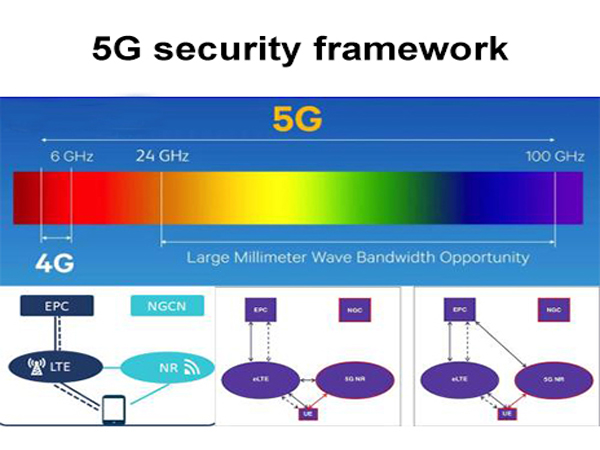
5G security includes not only the communication security of 5G network itself composed of terminals and networks, but also the security of the upper layer application carried by 5G network. At the beginning of the design of the mobile communication network standard, the reliability and security of the network are fully considered.
5G inherits the security architecture of layered and segmented 4G network, which is stipulated in the security architecture and process of 5G system of 3GPP 5G security standard:
In terms of security layer, 5G is exactly the same as 4G, which is divided into transmission layer, belonging layer/service layer and application layer.
In terms of security sub-domains, 5G security framework is divided into six domains: access domain security, network domain security, user domain security, application domain security, service domain security, security visualization and configuration security. Compared with 4G network security architecture, it increases service domain security.
Compared with 4G, 5G has stronger security capability, mainly reflected in:
1. Service domain security. In view of the security risks brought by the new servitization architecture of 5G, 5G adopts sound service registration, discovery, authorization security mechanism and security protocol to guarantee the security of service domain.
2. Enhanced user privacy protection. 5G network USES encryption to transmit user identification to prevent attackers from illegally tracking the location and information of users by transmitting user identification in clear text through the air interface.
3. Enhanced integrity protection. On the basis of encryption and protection of user surface data of 4G air interface, 5G network further supports the integrity protection of user surface data to prevent tampering of user surface data.
4. Enhanced internetwork roaming security. 5G network provides end-to-end protection of signaling between network operators to prevent the acquisition of sensitive data between operators in the way of man-in-the-middle attack.
5. Unified certification framework. Different access technologies of 4G network adopt different authentication methods and processes, which makes it difficult to guarantee the continuity of authentication process when switching heterogeneous networks. 5G adopts a unified authentication framework, which can integrate various access authentication methods of different standards.
To sum up, 5G provides standardized solutions and stronger security guarantee mechanism for enhanced security requirements such as servitization architecture, privacy protection, authentication and authorization.
